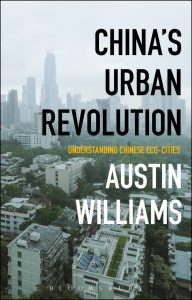Dan Dare or Dan Daren’t
Austin Williams | 3 October 2008
Whatever happened to the jet-pack; the monorail; the personalised Lear jet; Maglev taxis; automated highways; long-haul flights by space shuttle? All of these strange and wonderful transport ideas were commonplace Utopian ambitions for the future as seen by the Sixties’ generation. Most of them were even technologically possible back then. Today, if there is ever mention of anything so fanciful, it would be dismissed as, at best, unsustainable; at worst, irresponsible. Nowadays, by comparison, aviation policy demands restraint, transport gurus cycle to work, and space travel is deemed to be too risky.
But it’s not just fantastical visions of transport strategies that have disappeared off the agenda. Even commonplace ambitions for transport have become bogged down in the drive to reduce driving, etc. In 1959, when there were just 2.5 million cars in Britain (compared to 25 million today) and some 10 million worldwide (compared to 570 million today), The Guardian newspaper, today renowned for its critical stance on modern car driving, stated that: ‘The snail’s pace of modern British road-building is an unhappy reflection on our society.’ Indeed it was, but even moreso today. Recently, British Transport Minister, Dr Stephen Ladyman recently boasted that ‘from 2006–07 through to 2007–08 we expect to complete two national schemes, which collectively will deliver approximately 6.3 miles of road improvements to the network.’ It is all beginning to look a little pathetic.
Over the last ten years or so, transport debate in the UK has ceased to pretend that it is about the real, material, technical improvement of travel opportunities and is characterised by an absence of rhetoric about improving its speed, efficiency and reliability. Famously, ten years ago, Prime Minister Tony Blair suggested that ‘a new approach to transport may mean sometimes not travelling at all.’
Back to today. Pop into any university architecture department and ask yourself, whatever happened to the Walking City; intelligent homes; climatic domes; Plug-in cities; New Towns; underwater houses? Today, you are more likely to find students designing paranoid survivalist stilt houses (to escape the forthcoming sea level rises) than advocating audacious submersible architecture or daring to suggest the need for major infrastructural improvements to ensure that everyone – not just their clients – survive their forecasts for Armageddon.
And it’s not just students who are victims of this depressingly isolationist cultural malaise, although it is tragic that at the very time when young people are meant to be at our most creative, they are lumbered with such prosaic concerns. Nowadays, it seems that our futures are driven by dystopian nightmares rather than utopian dreams. Across the globe, from Bangladesh to The Netherlands to London’s Thames Gateway, instead of attempting to overcome natural barriers (a mindset which seems to have exemplified previous generations of architects and sums up the social role of architecture), we now have the concept of ‘managed retreat’ in the face of weather predictions. But if architects accept the principle that ‘nature knows best’ they may as well give up. To a certain extent in this new dystopian world view, things are already beginning to unravel.
At the 2005 Rotterdam Architecture Biennale the theme was ‘The Flood’. The New York Times observed that ‘the Netherlands has strategically begun to uncreate itself’ with contributors speaking of the need to cede land to the sea, turning back 700 years of land reclamation. The winner of the History Channel’s ‘City of the Future’ competition ‘shows New York’s street grid taken under floods of biblical proportions’.
With such an existential crisis in modern architecture and urbanism, it’s hardly surprising that there is a lack of clarity on the role of the city. Hardly anyone argues cogently for urban growth (negatively labelled ‘sprawl’) when urban density (positively labelled ‘the compact city’) is the new big idea. Cities will still grow, but increasingly it is seen as a problem rather than a social good. The futuristic fantasies for a cosmopolitan megapolis have metamorphosed, it seems, into the parochial drone of an eco-town.
It’s hardly surprising that the ubiquitous household robots that were supposed to alleviate domestic drudgery have failed to materialise in the West when the central policy agenda seems to be to turn off unnecessary electrical appliances. Here, there’s little place for labour-saving devices when saving resources is being prioritised over saving time. In the West, there seems to be a collective loss of ambition; an ambition that is so graphically, confidently displayed in China and India. The fact that China wants to continue using coal at an ever increasing rate, or that India will build five aeroplanes a month for the next five years, fills the Western arbiters of sustainability with dread.
For Western carbonistas, the belief that changing the world will, in all likelihood, make things better, is anachronistic. When India launched its cheap ‘People’s Car’ at the 2008 Delhi Auto Expo, company chairman Ratan Tata said: ‘I hope this changes the way people travel in rural India. We are a country of a billion and most are denied connectivity.’ Costing around £1300 it should transform personal mobility in India, but the UK’s Independent newspaper could see only tragedy. It headlined the story ‘Global warming: Just what overcrowded, polluted India didn’t need … the $3,000 car. This attitude is summed up by leading UK cynic, George Monbiot who hopes that his bookHeat will ‘make people so depressed about the state of the planet that they stay in bed all day, thereby reducing their consumption of fossil fuels’. Unfortunately, his miserable mantra of restraint is all too common in the West.
Gradually, this sort of low aspirationalism is becoming embodied in the West’s attitude to development per se and to China’s development in particular. Instead of generosity of spirit in seeing a peasant economy rise out of the dark ages, we tremble at the prospect of 1.5 billion Chinese wanting to get off their bicycles and jump in a car. Jonathan Porritt, establishment eco-guru, extends the carbon dioxide reduction logic in his shameless advocacy of a one-child policy. He says that the ‘fewer there are of us, the greater our personal carbon budgets.’ For him it is a simple equation: more people, more consumption, more energy use, more problems. By beginning to relax its own authoritarian population controls of late, undemocratic China is actually sounding more liberal than Western environmentalists.
Once we start to see humans as a problem instead of a source of creativity, sociability, innovation and hope, then every problem can be easily interpreted through a misanthropic prism. But what does ambition mean if we allow humanity to be represented as the biggest problem on the planet, rather than as the creators of a better future? Even those environmentalists who purport to want a better future, actually want that future dictated by our response to nature. Unfortunately, logically, if we put nature first, humans come second.
And so it seems that it is not just extraordinary activities like space flight where the contemporary approach seems to be to look to the future with trepidation rather than anticipation. But environmentalists regularly quote Kennedy’s 1960’s Space Age speech in order to pretend that they are the best protectors of the future (sic). In his 2007 Reith Lecture, economist Jeffrey Sachs finished by quoting Kennedy’s: ‘Our problems are man-made, therefore they can be solved by man’ as if to suggest that he had an unflinching faith in humanity. However, the core of his message remained that the population levels meant that humans’ had reached a point of ‘literal unsustainability’. I don’t think Kennedy would be pleased at this selective use of quotes to serve a population reduction or reduced resources argument. After all, if we want to reduce our carbon footprint, space travel is a non-starter. It’s about time that we put things like human achievement, social experimentation and scientific risk-taking – above mere carbon counting, sustainability spreadsheets and the culture of limits.
Five years ago, one respected science writer bemoaned the fact that ‘at the beginning of the twenty-first century, we look back wistfully, sometimes with mild shock, at an era of human space exploration whose promise seems to have evaporated’ A number of people have taken issue with that apparently negative statement pointing, for instance, to the technological marvel of the 2008 Mars lander currently analysing soil samples and beaming back detailed colour images. Undoubtedly, the technical form of these current missions is fabulously impressive, but maybe we are impressed partly because we have forgotten that NASA landed an unmanned robot there ten years (and today’s younger generation will be oblivious to the fact that USA’s Viking probe reached the surface of Mars over 40 years ago). Space flight is exciting wherever it is carried out, but the content of these safe unmanned missions actually belies a lack of ambition, rooted in humanity’s self-doubt, that exists back on earth.
Whether in space or in the more anodyne conditions of terra firma, regaining a belief in the risky business of human progress will enable humanity to have the confidence to experiment a little, and live a lot. To do that, we need to eradicate the mantra of sustainability – a pernicious and corrosive environmental doctrine that masks misanthropy, low aspirations and restraint. By removing its unthinking status as orthodoxy, we should reinstate of the notions of development, progress, experimentation and ambition in its place. Unless and until we do, any future ambitions will be mired in a dystopian present.
Published in Trespass magazine (autumn 2008) – www.trespassmagazine.co.uk






